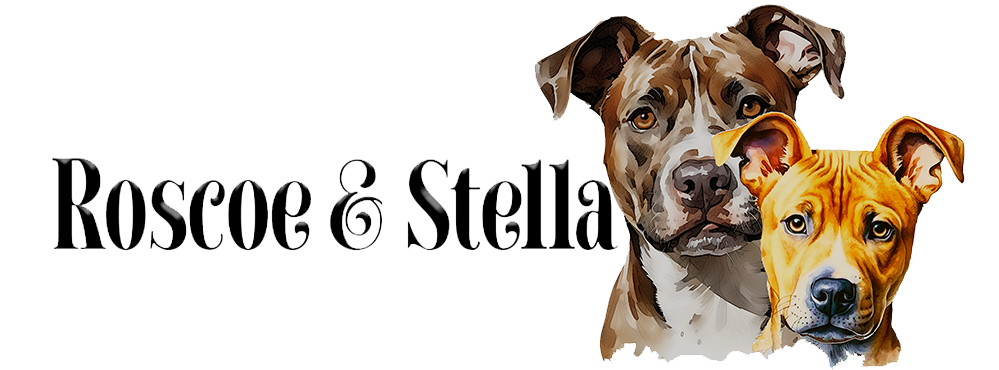Why Is My Dog Suddenly Afraid of Everything?
By roscoenstella / June 21, 2025 / No Comments / Dog Blog
If your normally confident or laid-back dog is suddenly cowering, hiding, or acting fearful around everyday things, it can be confusing and even heartbreaking. One day they’re fine—and the next, they’re jumping at shadows or refusing to walk past the trash can.
While it may seem like it’s come out of nowhere, sudden fear in dogs often has a cause. Sometimes it’s obvious; other times, not so much.
Here’s a clear breakdown of what might be going on and what you can do to help.
Common Reasons Why Dogs Suddenly Become Fearful
1. A Recent Scary Experience
Dogs can form strong associations. If something recently startled your dog—like a loud noise, aggressive dog, or rough handling—they may link that fear with a place, person, or object. Even a single negative experience can leave a lasting impression.
2. Age-Related Changes
As dogs get older, they can develop conditions that make them more anxious or unsure. Vision or hearing loss, joint pain, or cognitive decline (doggy dementia) can all lead to increased fear or confusion, especially in familiar settings.
3. Illness or Pain
Sudden behavioral changes can be a sign your dog is in pain or not feeling well. If your dog becomes afraid of being touched or of certain movements, it could be linked to hidden discomfort. Conditions like arthritis, dental pain, or digestive issues can trigger this behavior.
4. Lack of Socialization
Sometimes dogs who were not well-socialized as puppies suddenly struggle when exposed to new environments, people, or objects. Even adult dogs can hit new fear periods if they weren’t exposed to a wide range of experiences early on.
5. Noise Phobias or Sensitivity
Thunderstorms, fireworks, construction noise, or even high-pitched sounds from appliances can make some dogs anxious. Once they develop a fear of one sound, they may become jumpy or sensitive to others.
6. Trauma or Abuse History
Rescue or shelter dogs may carry trauma from previous experiences. If your dog is new to your home, they may show sudden fear as they begin to feel more comfortable and let their guard down.
What Are the Signs of Fear in Dogs?
Not all fear shows up as shaking or hiding. Common signs include:
Tail tucked or body low to the ground
Pacing or restlessness
Whining or excessive barking
Yawning or lip licking (stress signals)
Avoidance behavior (hiding or backing away)
Ears pinned back
Sudden clinginess
Trembling or panting when not hot
If your dog shows several of these signs, they may be trying to tell you they feel unsafe or unsure.
My Personal Experience With My Dog
I experienced this first-hand with my own dog, Max. Out of nowhere, he started refusing to walk past a certain corner of our street—something he’d done every day for years. He’d freeze, shake a little, and then try to turn back. I later realized a car had backfired loudly in that exact spot a few days earlier while we were walking. It took a few weeks of gentle encouragement, treats, and patience, but eventually, he regained his confidence. It was a reminder for me that even small moments can leave a big impression on our dogs.
How to Help a Fearful Dog
1. Stay Calm and Reassuring
Your dog will look to you for cues. Speak softly, avoid sudden movements, and try not to react with frustration or pity. Calm energy helps them feel safe.
2. Avoid Forcing Them
Don’t try to push your dog toward what they fear. Instead, give them space and time to approach it on their own terms. Forcing can increase anxiety and deepen fear.
3. Create a Safe Space
Give your dog a quiet, comfortable spot where they can retreat—like a crate, bedroom, or soft corner with blankets. Let them decompress without added stress.
4. Identify Triggers
Keep a journal of when your dog acts fearful. Note what was happening, where you were, and what objects or people were nearby. Patterns can help uncover what’s causing the fear.
5. Counter-Conditioning
Use positive associations to rebuild trust. For example, if your dog is afraid of the vacuum, feed them high-value treats at a distance while it’s off, then slowly work closer over time.
6. Consistency and Routine
Fearful dogs benefit from predictability. Stick to regular feeding times, walks, and play sessions. This gives them a sense of control in their environment.
When to Call a Professional
Sometimes fear doesn’t go away on its own. If your dog’s anxiety is affecting their quality of life or getting worse, it’s time to seek help.
Reach out to:
Your vet – to rule out medical causes or pain
A certified dog behaviorist – for a training plan
A veterinary behaviorist – if medication might be necessary for severe anxiety
It’s okay to get help—fear can be deeply rooted, and expert guidance can make all the difference.
Final Thoughts
Sudden fear in dogs can be puzzling, but it usually has an explanation. Whether it stems from a bad experience, pain, aging, or anxiety, there are steps you can take to help your dog feel secure again.
Be patient. Build trust. And don’t hesitate to seek professional advice if you’re unsure.
Fear doesn’t mean your dog is broken. It just means they need a little extra understanding—and with your help, they can find their confidence again.
